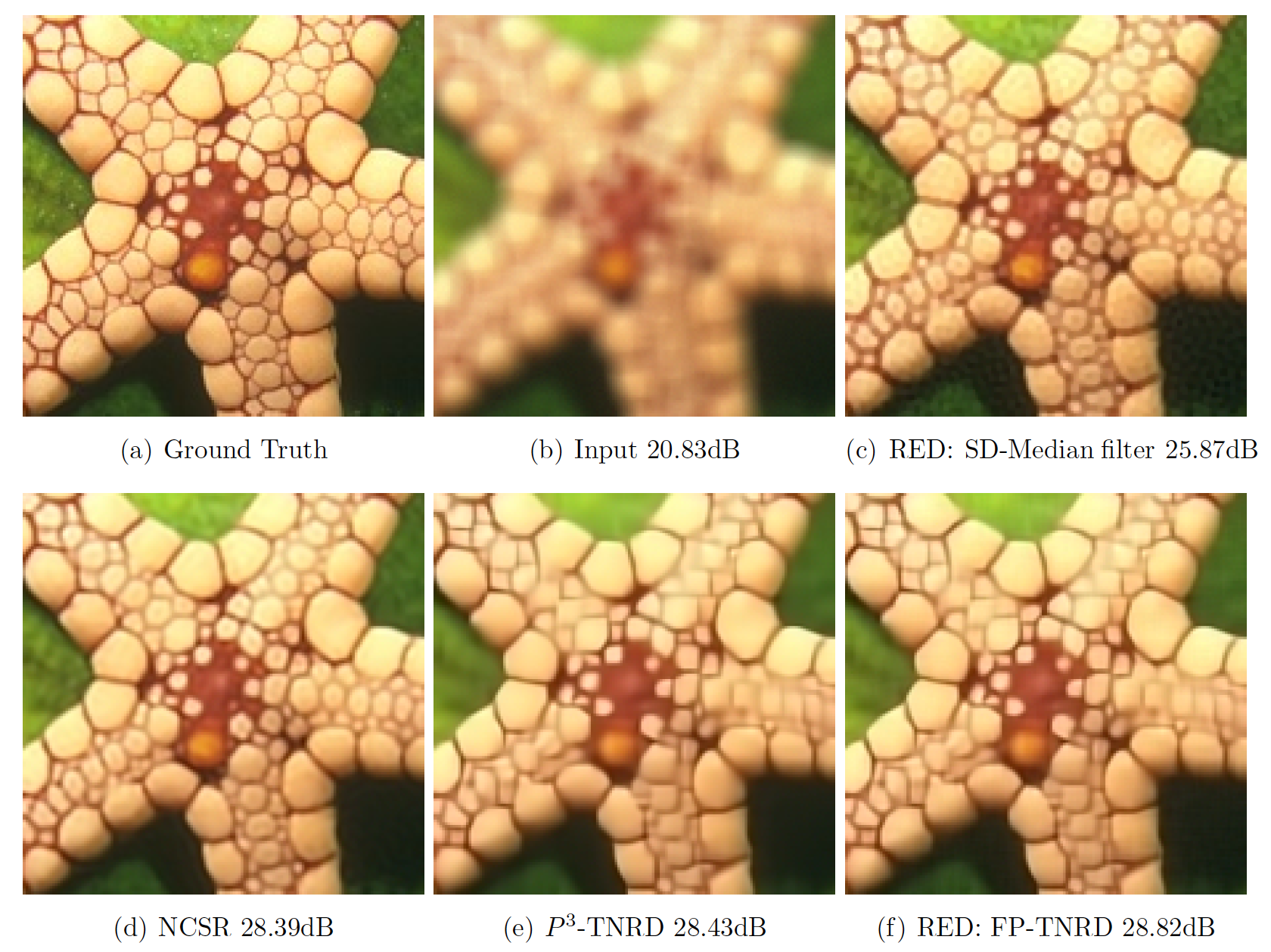The Little Engine that Could: Regularization by Denoising (RED)
Removal of noise from an image is an extensively studied problem in image processing. Indeed, the recent advent of sophisticated and highly effective denoising algorithms lead some to believe that existing methods are touching the ceiling in terms of noise removal performance. Can we leverage this impressive achievement to treat other tasks in image processing? Recent work has answered this question positively, in the form of the Plug-and-Play Prior ($P^3$) method, showing that any inverse problem can be handled by sequentially applying image denoising steps. This relies heavily on the ADMM optimization technique in order to obtain this chained denoising interpretation. Is this the only way in which tasks in image processing can exploit the image denoising engine? In this paper we provide an alternative, more powerful and more flexible framework for achieving the same goal. As opposed to the $P^3$ method, we offer Regularization by Denoising (RED): using the denoising engine in defining the regularization of the inverse problem. We propose an explicit image-adaptive Laplacian-based regularization functional, making the overall objective functional clearer and better defined. With a complete flexibility to choose the iterative optimization procedure for minimizing the above functional, RED is capable of incorporating any image denoising algorithm, treat general inverse problems very effectively, and is guaranteed to converge to the globally optimal result. We test this approach and demonstrate state-of-the-art results in the image deblurring and super-resolution problems.
PDF Abstract




